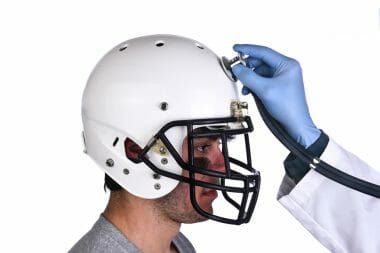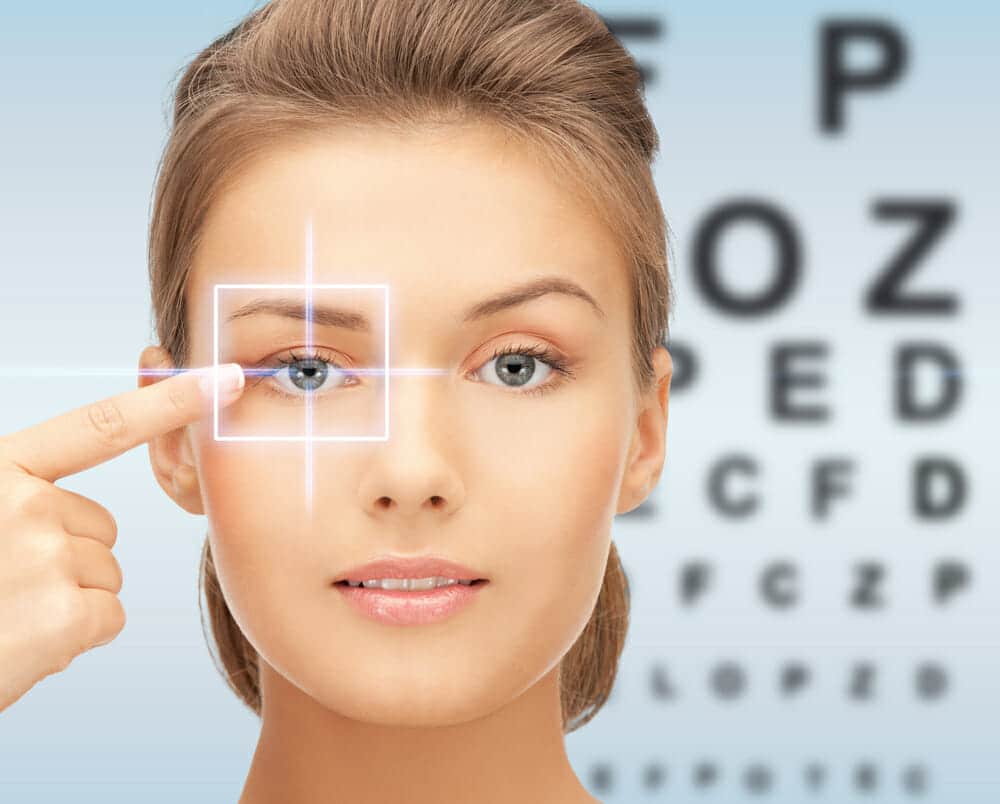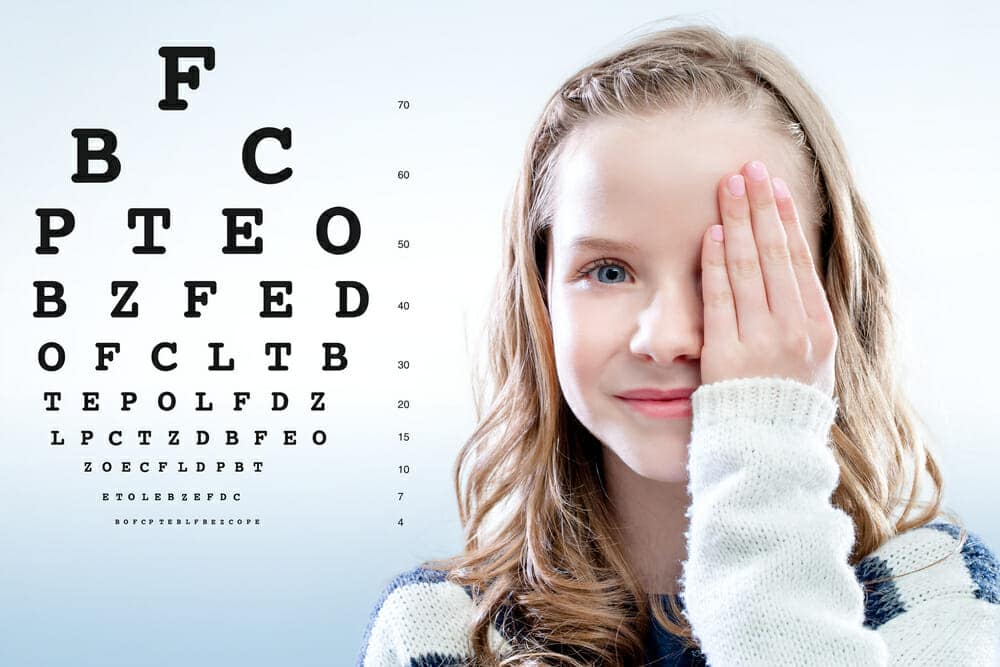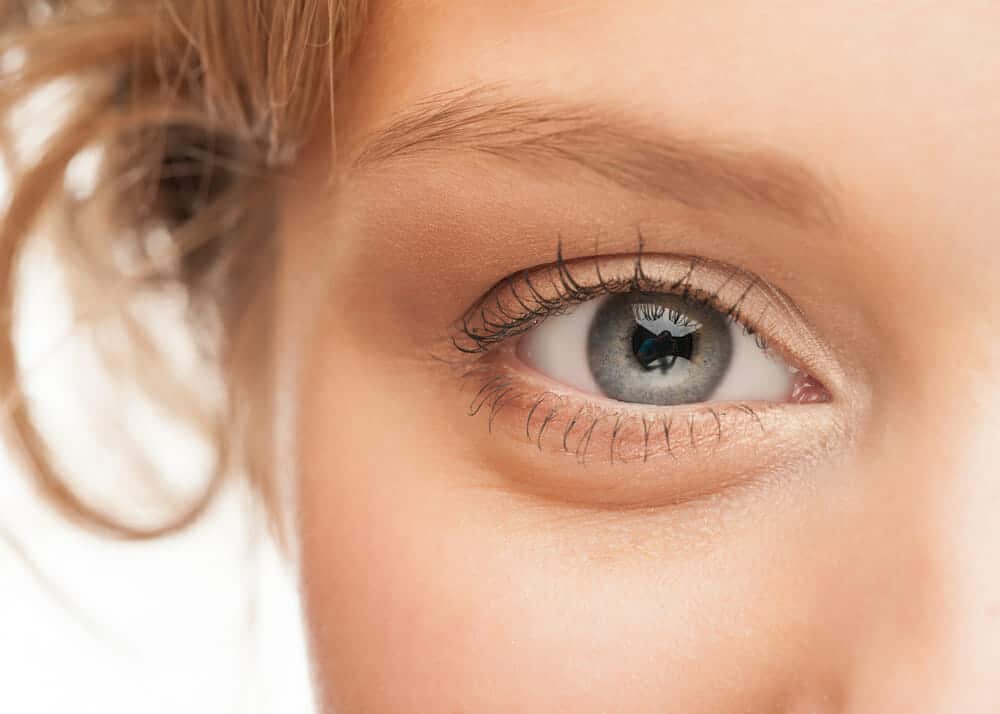I always thought the kids that wore glasses looked smart. I remember sitting in the cafeteria in the first grade and wishing I wore glasses. I also thought the same about braces, but thankfully, my parents thought better of it! I didn’t actually “need” glasses until I was in the 8th grade. The frames I picked covered most of my face!
I didn’t mind the glasses until I started having problems seeing while I was playing football. I played for Vanderbilt University and then 12 years of professional football after that. I needed every advantage out on the field so I wore soft contact lenses. This was a huge annoyance as I seemed to constantly get poked in the eye. If only I had known then what I know now!
I learned about the Bates Method about two years ago and decided to try it out immediately. Now I may be a special case…but after doing some of the exercises ONCE, I was able to see clearly without glasses for the next two years! I will cover these eye-specific exercises and other nutritional tips in this series of articles.
The effects did start to wear off as time went by and I have had to revisit the exercises to get my vision “back in check”. The reason I came up with this 10 part series is because I have first-hand experience with the great results that are possible and I had to share that with those of you that suffer with glasses and contacts every day just like I did.
I need to stress that I believe in natural ways to heal the body by working with the body’s ability to heal itself. I am a Chiropractor that has experienced the results of these exercises and only wish to share this information with others so that they may benefit from them as well.
The Crux of Bates’ Teachings
- Weak muscles are not the cause of poor vision. Tense eyes are the cause so you have to relax your eyes. The Bates Method teaches you to relax the muscles around your eyes to allow your eyes to move and function optimally.
- Stress squeezes muscles around your eyeballs and contorts them. Such strain reduces your visual acuity by altering where the field of vision lands on your retina.
- Far-sightedness, near-sightedness, astigmatism, cross-eye, glaucoma, cataracts, and other conditions can benefit from the Bates Method.
Who is this 10 Part Series for?
- Anyone from 5 to 100 who wishes to make their vision better as it’s never too late to do so.
- Anyone who has problems with seeing correctly and wants to be able to do so.
- Anyone who uses weak, moderate or even strong reading glasses, or even bifocals or trifocals.
- Anyone who experiences eye strain, fatigue, or headaches when reading or trying to focus on the computer screen.
- Anyone with excellent near-point vision who wishes to keep it that way and save themselves from having to wear glasses.
What you can potentially gain from the exercises?
- Freedom from reading glasses.
- A weaker prescription and more independence from reading aids.
- An improvement in any other visual condition.
- Clearer night vision.
- Less stress and more relaxation.
How to Begin
- Read the entire, 10 part series
- Find out from your doctor what your special vision problem is, if you have one.
- Do the relaxation exercises before the eye exercises.
- Do not wear your glasses during the exercises unless your doctor advises you to do so. If so, find out which are the appropriate eyeglasses to wear.
- Make sure you have the appropriate light during your transition from wearing glasses, and especially while reading.
HELPFUL HINT: Take frequent vision breaks throughout the day, especially during computer work or if you begin to feel any eyestrain and do the following:
- Take off your glasses.
- Yawn three times or more (more on this in part 3 of the series)
- Stretch your body up.
- Stretch your eye muscles by looking up, down, left, right, diagonally and around in circles.
- Shift focus quickly from near to distant objects 5 times (called shifting)
- Blink for 15 seconds or longer (tears create a natural contact lens)
- Palm for 5 deep breaths (details in part 4)
At first, it will be an effort to do the exercises without your glasses. But after a week or so, your eyes will be invigorated and you will see more clearly what was blurry or even invisible before.
How long is a daily practice?
That’s up to you. You should practice for at least five minutes a day, ideally 15 minutes a day or longer. Obviously, the longer you devote to the exercises, the quicker you will see results.
That said, you should start out slowly and work up to a longer time. The number one rule is to relax, not strain your eyes! Understanding this and doing it is your key to success.
What if my eyes feel fatigued?
If you feel fatigued from the exercises, stop them for a week or so and start again. If your eyes still feel fatigued, stop them for a few weeks and begin again.
How long before I see improved vision?
In general, after two weeks or so, you should begin to see signs of improved vision. I was lucky enough to see great results after only one session!
Do I just stop wearing my glasses?
If you have a mild prescription, gradually go more and more frequently without glasses as you feel your eyesight improving. Always, of course, wear glasses for driving if they were needed to pass your driver’s test.
How long does it take before one can throw away their glasses?
The Bates Method may take some time and you will need patience. How long varies greatly from person to person. I may have been a special case. Typically, you will need to continue the program for weeks or months, or even longer for extreme conditions.
What kinds of eye problems can be corrected with the Bates Method?
The Bates Method is successful for correcting the two most common eyesight conditions requiring glasses: myopia (near-sightedness) that typically appears in childhood or adolescence; and presbyopia (farsightedness that leads to reading glasses at middle age).
Is recovery of good vision possible?
Just as a broken limb can be rehabilitated through exercise, Bates believed that the eyes can as well. He felt that wearing glasses was the same thing as using a crutch for a broken leg but didn’t actually heal the leg itself.
Does my vision remain constant?
How clearly you see varies according to your physical and emotional state. In other words, vision is constantly changing and dynamic.
What Bates Methods will I learn?
- Relaxation of body and eyes
- Breathing
- Exercise One: Deep Breathing
- Exercise Two: Lens Flexor
- Stretching
- Body Movement
- Exercise One: Sway
- Exercise Two: Long Swing
- Exercise Three: Cross-Crawl
- Energetic Yawning
- Blinking
- Palming
- Sunning (my favorite!)
- Pinhole glasses
- Alternate Eye Movements
- Breathing
- Lazy Eights
- Central fixation
- Exercise 1: Tibetan Wheel
- Exercise 2: Snellen Chart
- Exercise 3: Domino Chart
- Exercise 4: Edging
- Exercise 5: Mandala
- Eye Oblique Stretch
- Near & Far
- Visualization
- Analytic seeing
Eye Anatomy
There are 6 extraocular muscles that control eye movement. These are the muscles that the Bates Method focuses on to ensure relaxed, clear vision. The image above does not show the internal (medial) rectus muscle, which pulls the eye toward the nose.
How Vision Works
The most common vision problems are near sightedness (can only see close objects) and farsightedness (can only see far objects). These are caused by a shift in the focal point inside the eye itself. These conditions are all based by a “short” or “long” eyeball due to muscle imbalances.
With normal vision, the image is focused on the retina as it should be. In farsighted people, the image has a focal point behind the retina and, in nearsighted people, it is in front of the retina.
The Visual Center is the area in the brain where images are processed. It is found in the back, or occipital region of the brain. Certain chiropractic techniques can increase circulation to that area thus improving its function.
BATES EXERCISES
Relaxation
Everything about the Bates Method is about relaxing the eyes, and for good reason. Normal eyes are relaxed eyes. Visions should feel effortless. Strain, whether physical, mental, emotional or spiritual will impair proper vision.
Signs that your eyes are strained.
- Squinting eyes
- Ruffled brow (causes wrinkles too!)
- Tense facial muscles
- Clenched jaw
- Mental stress
WATCH OUT: When people have a hard time seeing they typically will squint, which actually makes your vision worse. Squinting is one of the worst things you can do for your vision as it stresses your muscles.
If you are like the average, stressed out person living in our hectic world, good chance that you experience one or more of these signs of eye strain. You don’t have to any longer! In this 10 part series, you will learn how to use the Bates Method to relax your eyes. In so doing, your mind and body will relax as all work together: when relaxed, your muscles lose their tension, your breath slows down and deepens, your heart rate lowers, and your vision becomes clearer and sharper.
Stay tuned for part 2, as we dive into the significance of HOW you breathe, dynamic movements and more!









Reply